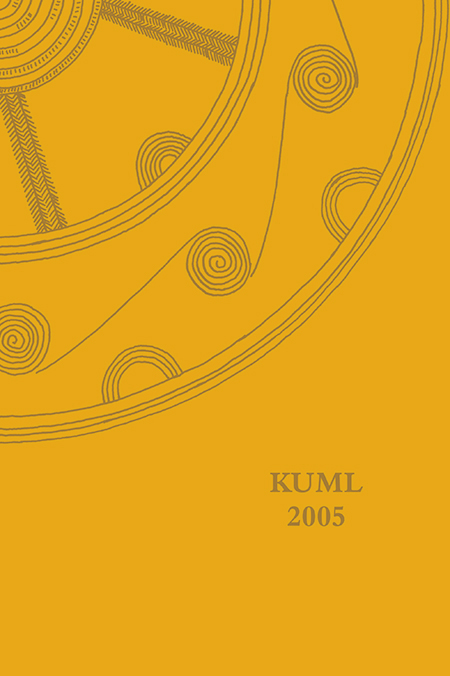Træværket fra Stege Borg – Håndværk, teknologi og ressourcer i 1314
DOI:
https://doi.org/10.7146/kuml.v54i54.97316Nøgleord:
Træværk, Stege Borg, 1314Resumé
The woodwork from the castle of Stege BorgIn 2000, Sydsjælland’s Museum excavated a large part of the Stege Castle, erected in 1314 on an enlarged island in the entrance of the Stege Cove. Due to landfill, the castle is now incorporated in the town of Stege, and no traces of the castle are preserved above earth level. However, from level 0 and down, the soil is so moist that wood constructions of oak and beech are preserved. The constructions consist of a wall built of horizontal planks to support the castle island, and a stockade towards land. The wall prevents the soil and clay used to enlarge the castle island from sliding into the water. The shallow sea between the coast and the castle was dredged and turned into a proper moat, and in order to prevent the almost vertical coastline from giving way – and to provide further defence – a stockade in the form of a stave wall was erected towards the land. The wooden constructions are so well preserved that tool marks – mainly from saws and axes – are clearly visible. These marks were investigated and registered during the excavation. The article analyses the marks and compare them with known medieval tools. In addition, on the base of written sources and experimental archaeology, a bold attempt is made to calculate the hours and money required to erect the Stege Borg castle.
Thomas Finderup
Roskilde
Henriette Rensbro
Nationalmuseet
Translated by Annette Lerche Trolle
Downloads
Publiceret
2005-10-20
Citation/Eksport
Finderup, T., & Rensbro, H. (2005). Træværket fra Stege Borg – Håndværk, teknologi og ressourcer i 1314. Kuml, 54(54), 225–268. https://doi.org/10.7146/kuml.v54i54.97316
Nummer
Sektion
Artikler
Licens
Fra og med årgang 2022 er artikler udgivet i Kuml med en licens fra Creative Commons (CC BY-NC-SA 4.0).
Alle tidligere årgange af tidsskriftet er ikke udgivet med en licens fra Creative Commons.


